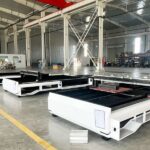When chilly evenings start creeping in, you might wonder whether your heater is still up to the task.
The moment you notice signs your furnace needs repair you cannot ignore them.
Detecting trouble early lets you act before the bitter cold sets in.
Here, you will read about the most common indicators of a failing furnace, how ongoing heating/cooling system maintenance helps, and when to contact a reputable service company.
Strange Noises or Vibrations
Your furnace should run quietly with only the soft whisper of air movement.
If you hear banging, rattling, or squealing, these are warning signals.
A loose panel, broken blower wheel, or failing motor bearings often produce unusual sounds. Persistent rattling or clanking can wear components faster.
Shaking or vibrating units also point to mounting issues or imbalance in internal parts.
In many homes, the furnace works alongside air conditioning equipment, so problems that start in the heating portion can later affect overall system performance as well.
Acting on these noises promptly often prevents more expensive fixes and avoids the need for broader heating system repair when colder weather deepens.
Unusual Odors in the Air
Your heating unit should not fill your home with odd smells.
Musty, burning, or chemical scents are troubling. A burning smell may come from overheated wiring or a failing motor.
A stale odor could suggest mold growing somewhere in the ductwork or inside the system.
If the air smells off when the furnace starts, schedule immediate inspection by a trained technician. Do not wait until the smell worsens or leads to health risks.
Cold Spots and Uneven Temperatures
Each room in your home should feel comfortably warm when the furnace is fully functioning.
If some areas turn icy while others remain warm, that unevenness signals trouble.
This imbalance might stem from clogged filters, duct leaks, or a dying blower motor.
Diagnosing inconsistent heat early saves on energy bills and keeps comfort levels intact.
Rising Energy Bills with No Apparent Change
If your energy bills climb even though your usage habits remain constant, your heating system might be struggling.
Loss of efficiency is a classic sign of internal strain.
Faulty parts, clogged filters, slipping belts or dirty burners all make the furnace work harder to maintain the desired temperature.
A carefully performed diagnostic test can reveal leaks, inefficiencies, or parts needing adjustment.
The Pilot Light or Ignition Behaves Oddly
Gas furnaces rely on a pilot light or an electronic ignition system.
If the pilot light flickers, turns yellow, or goes out frequently, that is a red flag.
A yellow flame may indicate carbon monoxide production, which poses dangers to occupants.
Malfunctioning ignition systems can result in heating shutoffs or inconsistent ignition.
Any irregularity in flame behavior demands prompt professional attention.
Weak Airflow or Poor Distribution
Strong airflow gives warm air to every corner of your outdoor space.
When vents blow gently or weakly, trouble lurks. Blocked ductwork, failing blowers, or motor trouble may be the cause.
Grass, insulation, pests, or debris lodged inside ducts also reduce the passage of heated air.
Checking airflow regularly is an important part of heating system maintenance.
Excessive Dust or Debris around Vents
If dust builds up around your vents more than usual, that may indicate trouble inside the furnace.
Broken filters, failing blower belts, or deteriorating heat exchangers can release particles into the air.
That dust aggravates allergy symptoms and strains filters faster.
A clean interior and filter system keep indoor air quality higher and extend system life.
Frequent Pilot or Filter Replacements
Filtration is a small step with large payoff.
If you find yourself replacing filters far more often than standard schedules call for, the system might be compensating for other issues inside.
A dirty or clogged filter causes strain, which in turn leads to more frequent replacements.
Similarly, if the pilot light goes out often, the ignition system or gas valve may malfunction.
These habits raise red flags about hidden stress within the furnace.
Age of the Unit and Increasing Breakdowns
Furnaces do not last forever. When your unit crosses over a decade or more of service, the wear starts piling up.
Frequent minor repairs often foreshadow large failures.
Parts may become obsolete and repair costs may approach replacement costs.
When breakdowns happen more regularly, that is a clear symptom the system is nearing end of reliable life span.
Rising Carbon Monoxide or Safety Sensor Triggers
Modern heating units include safety sensors and CO detection features.
If detectors show elevated carbon monoxide levels, or if safety switches cut power frequently, those events are not casual.
They may signal cracks in the heat exchanger, leaking gas lines, or clogged ventilation.
All of these conditions require professional diagnosis. Never ignore repeated sensor activations: schedule prompt inspections.
System Struggles to Reach Set Temperatures
When your thermostat says 70°F yet your home refuses to warm past 65°F, the heater is underperforming.
This indicates insufficient heating output or failing components.
Blocked burners, clogged coils, or gas pressure issues might hinder full performance.
A technician can test flame temperature, gas flow, and airflow to isolate the weak link.
Shortened Cycle Times or Incomplete Heating
Sometimes furnaces stop prematurely before achieving target temps.
These aborted cycles cause discomfort and inefficiency.
The system may begin heating but shut off when sensors misread temperature.
This suggests faulty thermostats, broken limit switches or safety sensors at work.
Observing for premature shutdowns gives you early warning.
Visible Rust, Corrosion or Water Leaks
Examining your furnace’s exterior reveals warning signs.
Rust or corrosion on metal surfaces, water pooling beneath the cabinet, or staining may point to internal leaks or condensation problems.
Corrosion near burners or exhaust vents leads to inefficiency and structural weakening.
Detecting such damage early extends your heater’s functional life.
No Heat When Furnace Kicks On
Often a heater will run (fans spin, ignitors click) but no warmth follows.
That suggests a failure in the ignition, heat exchanger or gas line.
The system works outwardly yet lacks the main function.
That symptom is among the clearest signs the furnace needs repair.
It demands immediate professional intervention.
Smells or Symptoms of Mold in Ducts
If you notice musty air returning through heat vents once the system runs, internal mold or mildew could be circulating.
Moisture accumulation within ductwork encourages microbial growth.
That growth affects air quality, clogs filters, and burdens components with additional resistance.
Cleaning duct lines, inspecting insulation, and repairing leaks fall under complete heating/cooling system maintenance plans.
Challenges During Intermittent Operation
Sometimes your furnace acts erratically. It may heat well on some days and refuse on others.
These random failures suggest fluctuating voltage, wiring problems or failing sensors.
Sporadic performance is harder to trace yet no less serious.
Monitoring cycles, power fluctuations, and thermostat readings helps a trained technician trace the root cause.
Cold-Weather Readiness: Repair Before the Freeze
Preventing heating failure is about foresight and timely intervention.
By watching for abnormal noises, odd smells, weak airflow, pilot light issues, energy spikes, temperature inconsistencies, and visible damage you protect your indoor comfort.
Contact a reputable service company at the first hint of trouble.
Their skilled technicians perform repairs or guide you toward appropriate upgrades.
Observing diagnostics early can save thousands in avoidable issues.
In cold weather, your heating system is not just convenience, it is safety and health protection.
Choosing repair over emergency replacement helps you keep the heat when you need it most.



